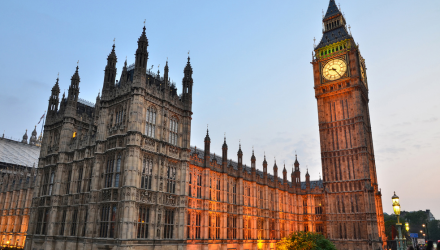By Maria Miranda on Thu 31 October 2024 in Blog
What the Budget 2024 means for ventilation and building development

It’s long been anticipated that the announcement of the Labour Party’s 2024 budget would prominently feature funding to build more affordable housing. As expected, the Autumn budget has placed great emphasis on investment in building affordable housing and retrofitting existing social housing and private properties, to improve the safety and energy efficiency standards of dwellings across the country. As a result, many developers in the UK will now be wondering how they can access funding opportunities designed to incentivise the production of more ‘safe, secure and affordable’ housing.
Read on to discover the takeaways from the 2024 budget regarding housing, and how developers can take advantage of the latest rounds of funding.
Key housing development policies announced
With the Autumn Budget comes a variety of investment announcements that directly impact the housing development industry.
Most notably, it has been announced that £5 billion in funding will be allocated to housing development, including a £500 million boost to the Affordable Homes Programme (taking the total to £3.1 billion). This will give housing developers and property managers access to greater funds as part of the government’s plans to increase affordable housing options. These investments are designed to not only encourage developers to improve the living conditions of properties, but also to incorporate more energy efficient designs into their developments.
The budget’s announcement coincides with the recently introduced third wave of the Social Housing Decarbonisation Fund, which provided local authorities and social housing landlords with £1.8 billion in funding to improve the energy performance of existing and new build properties in their portfolio. The 2024 budget further emphasises the government’s goal to provide more affordable and energy efficient social housing, incentivising the introduction of more green initiatives. One particular area of focus surrounds ventilation standards, which have become a central topic in recent years due to increased regulation.
Ventilation: Why it's a priority in new developments
Improving existing ventilation and providing more energy efficient options is quickly becoming a necessity for property managers and developers who want to benefit from the government’s latest investment into the property market.
In recent months, greater emphasis has been placed on ensuring that both social housing and private properties are properly ventilated. With Awaab’s Law– introduced as part of the Social Housing (Regulation) Act in July 2023 – requiring that landlords and developers quickly respond to areas of concern, it’s crucial that developers invest in systems that contribute to the reduction of air pollution and improve quality of life.
Energy efficiency and sustainability in the housing sector is also essential for achieving the government’s net-zero targets by 2050. Ventilation plays a key role in improving indoor air quality and reducing energy consumption by minimising the need for heating and cooling. Proper ventilation enhances indoor air quality, allowing for better temperature regulation and a safer living environment for inhabitants. This not only leads to significant energy savings but also contributes to lower carbon emissions in housing. By optimising ventilation, property managers and developers can create healthier living environments while supporting government efforts to combat climate change and promote sustainable practices.
Changes to building regulations: focus on ventilation
Upcoming updates to Part F and Part L of the Building Regulations Act bring significant changes for developers. The Future Homes and Building Standard (FHBS) emphasises enhanced energy efficiency through the Home Energy Model (HEM), promoting sustainable practices in both social and private housing. The Building Safety Bill will also introduce new compliance requirements, highlighting safety throughout the construction process. As a result, developers must adapt by integrating innovative designs that meet both energy performance and safety standards.
These regulatory changes will continue to tighten requirements for air quality and mechanical ventilation, critical for improving energy performance and indoor air quality. Effective ventilation aligns with Net Zero Building Standards (set to take effect in 2025) and is vital for reducing energy consumption and carbon emissions. By mandating improved ventilation systems, these standards support better thermal performance and long-term sustainability, ensuring that buildings provide comfort while contributing to energy-efficient living environments.
Challenges and opportunities for developers
Implementing advanced ventilation systems presents a cost dilemma for developers. In the short term, these systems may incur higher installation costs, which can be a barrier, especially for small developers with limited budgets. However, the long-term savings from improved energy efficiency often outweigh these initial expenses. Enhanced ventilation reduces heating and cooling demands, leading to lower energy bills.
Investing in advanced ventilation is a strategic choice that can lead to significant financial benefits over time, promoting sustainability while enhancing competitiveness in the market by exceeding the latest regulatory standards. As consumer demand for eco-friendly and well-ventilated homes increases, developers who adopt innovative heating and ventilation technologies could have the advantage when appealing to a more environmentally conscious market.
Looking forward: What else to expect in the coming days
With the latest announcement clearly indicating the Labour government’s continued prioritisation of more affordable, energy efficient housing, it’s anticipated that further announcements will be made regarding continued commitments to energy-efficient building and ventilation standards.
Many predict that the focus on ventilation and air quality will result in more collaborations between the government and the private sector, in an attempt to accelerate ventilation upgrades in social housing and new build properties. It’s suspected that this focus will materialise in the form of more stringent measures surrounding indoor air quality, with particular emphasis on making marked improvements to urban developments and housing in high-pollution areas.
In line with the budget’s clear move towards more energy efficient policies, it’s likely that we will continue to see tighter regulations introduced regarding air quality and climate management.
School building maintenance and development funding
The chancellor also announced £2.1bn for school maintenance which should include improvements to ventilation. This is £300 million more than this year. Along with that, they also pledged £1.4bn to rebuild schools to meet a target of rebuilding 50 schools in England a year, so that children do not have to learn in “crumbling” classrooms. With this level of budget being allocated to school maintenance and development it’s important for those involved in projects in the education sector that choosing the tried and tested ventilation products are paramount to ensure high indoor air quality in classrooms is maintained. This can be a particularly acute problem in enclosed spaces like classrooms.
Potential funding and grants for ventilation updates
It’s anticipated that the funding and incentives already on offer will be extended, continuing to offer financial support to developers who prioritise improved ventilation and air quality in their properties. With the budget outlining an emphasis on the utilisation of innovative tech, many predict that we will see an extension on the support provided by the government to use more efficient ventilation solutions.
How Airflow can help
With £3.1 billion committed in the 2024 budget to the production of more affordable housing, it’s vital that housing developers can meet the strict requirements on energy efficiency and air quality that allow them to access this funding.
In order to do so, developers and landlords must stay informed about the evolving regulations and opportunities in energy efficiency and sustainability. By integrating advanced ventilation solutions, it’s possible to enhance indoor air quality and reduce energy costs. Airflow's innovative mechanical ventilation and heat recovery (MVHR) systems can help developers to access vital funding through improved energy efficiency and higher air quality.
Don’t wait for the regulations to catch up—act now to ensure your projects meet future standards of improved comfort and sustainability. Get in touch today to speak to a member of our team about how you can implement our ventilation and air quality control systems into your properties.


